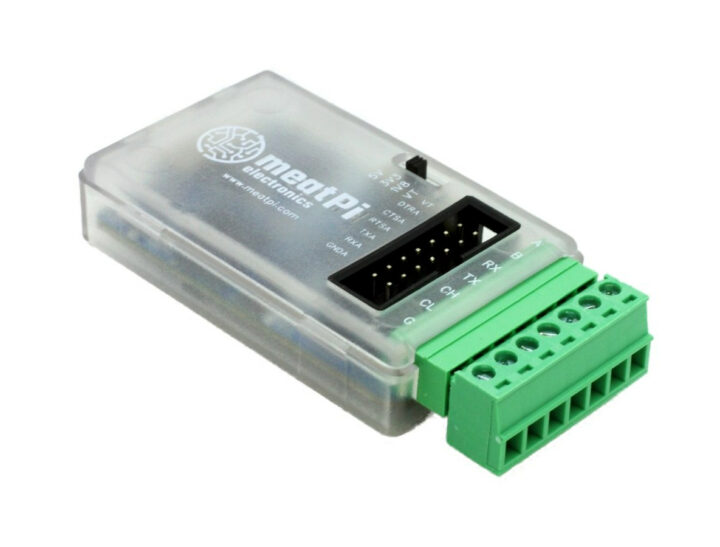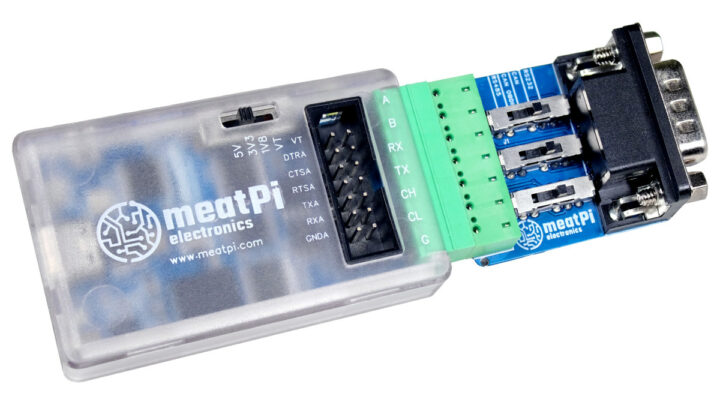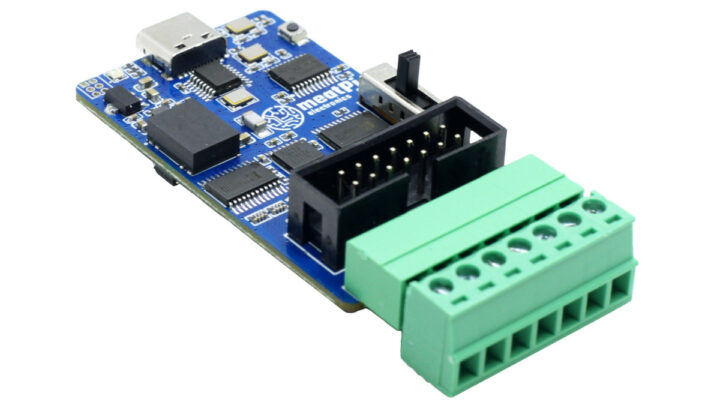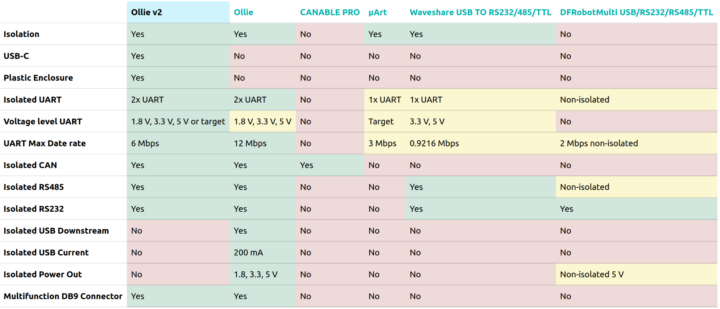Ollie v2 is an improved version of the Ollie USB to isolated UART, CAN Bus, RS232, and RS485 converter that gains a USB-C port, a plastic case, the ability to set the voltage from the target board, and various other minor improvements.
Like the first version, the Ollie v2 is a portable tool designed for hackers and field engineers that allows them to work with a single device instead of a bunch of USB converters, each handling a single protocol, and isolation makes sure the host, such as a laptop, is protected from high voltages.
Ollie V2 specifications:
- Serial chip – WCH CH344 quad-serial port chip (instead of XR21V1414 in the first design)
- Host interface – USB Type-C port
- Isolated interfaces (all with ESD protection)
- 2x UART ports up to 6 Mbps with 1.8/3.3/5 V or target voltage levels (set by slide switch)
- CAN 2.0A/B up to 1 Mbps bus using CH32V305 RISC-V MCU with custom firmware compatible with SocketCAN, CAN bus monitoring with BUSmaster, APIs for LabView, C#, VB.Net, Delphi, and Python
Downstream USB – USB Type-A connector up to 12 Mbps; current limited with auto-restart, reverse current protection(removed from Ollie v2)
- RS485 with bias and termination resistors switches, up to 500 kbps
- RS232 up to 235 kbps (typ.)
- Optional CAN/RS232/RS485 DB9 pluggable connector with mode selectable by switch (note: design incompatible with Ollie v1)

While the functionalities are similar, the main components have changed to offer a more resilient supply chain for mass production. So some of the features have improved while others have regressed. For example, the new model’s UART speed is limited to 6 Mbps instead of 12 Mbps and lacks a USB Full Speed port for downstream targets, but as noted by MeatPi electronics that port was not that useful since “most modern debuggers such as STLINK-V3 only support USB High Speed”. Another minor improvement is the addition of activity RGB LEDs for COM ports.
The table below shows how the new Ollie v2 compares to the original version and other USB converters on the market such as the μArt adapter.
Software and firmware have changed too, and custom drivers for Windows and script for Linux help identify the COM ports whose names now start with “MeatPi USB” (Windows) and “MEATPI” (Linux). WCH provides drivers for MacOS, but CAN Bus is not supported, so it’s not the ideal OS for Ollie v2… You’ll find those drivers, instructions to get started with the CAN Bus, API documentation with programming examples, and the PDF schematic on GitHub. The CAN bus firmware for the RISC-V MCU will be released at a later date.

MeatPi has launched the Ollie v2 on Crowd Supply with a symbolic $1 goal and raised over $10,000 so far with 9 days to go. A $60 pledge is asked for the Ollie v2 with its enclosure and an additional $10 for the DB9 v2 adapter. Shipping adds $8 to the US and $18 to the rest of the world with deliveries scheduled to start by mid-December 2023.

Jean-Luc started CNX Software in 2010 as a part-time endeavor, before quitting his job as a software engineering manager, and starting to write daily news, and reviews full time later in 2011.
Support CNX Software! Donate via cryptocurrencies, become a Patron on Patreon, or purchase goods on Amazon or Aliexpress







Nice, but might just be a lot cheaper to just buy individual UART/CAN/RS485 devices
Is it just me or are there large preconceptions coloring the table?
A new to develop product is compared with more simple products of at least 3 years old. I wonder if the Canable Pro and the uArt are still available as mentioned in the table.
Current Canable Pro’s are connected with USB-C…
I wonder why it should not be called isolated when the only connection (CAN) is.
I do know products that are isolated at all connections, but generally they have an independent power supply (because they have a power supply they need isolation at the USB port in the first place).
All interfaces are isolated not just CAN. There’s an onboard 5V to 5V isolated DC power supply so no need for any external power.
I’ve got the original ollie (love it, btw), and wouldn’t mind getting a second, but the new version doesn’t seem to support the CANtact, Candlelight or PCAN emulator firmware. This is what made it the most flexible versatile Can tool imo
Also, the Uart speed is half of the v1.. so USB-C doesn’t seem like much of an upgrade .
The new firmware does it all, socketCAN support, API in different languages and monitoring software.Not to mention the performance improvement because of the USB high speed interface. In V1 I had multiple firmware because each one had its benefits.